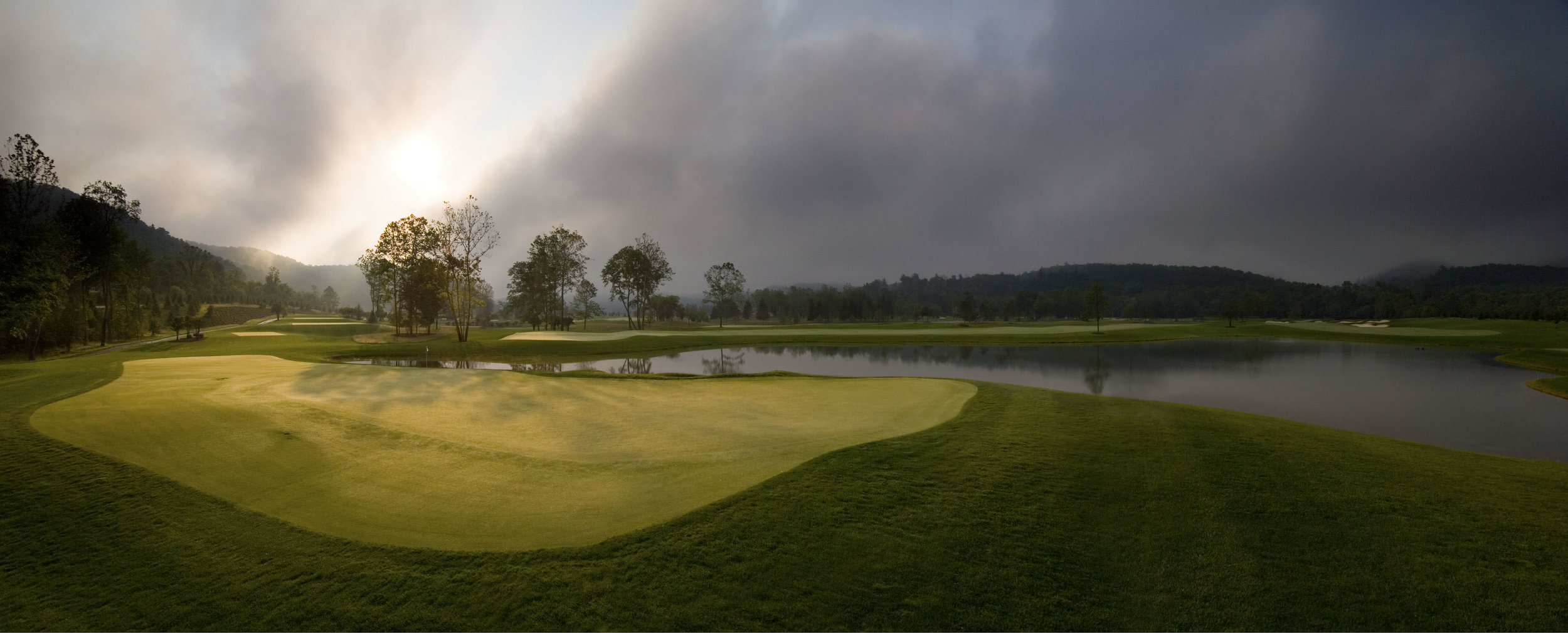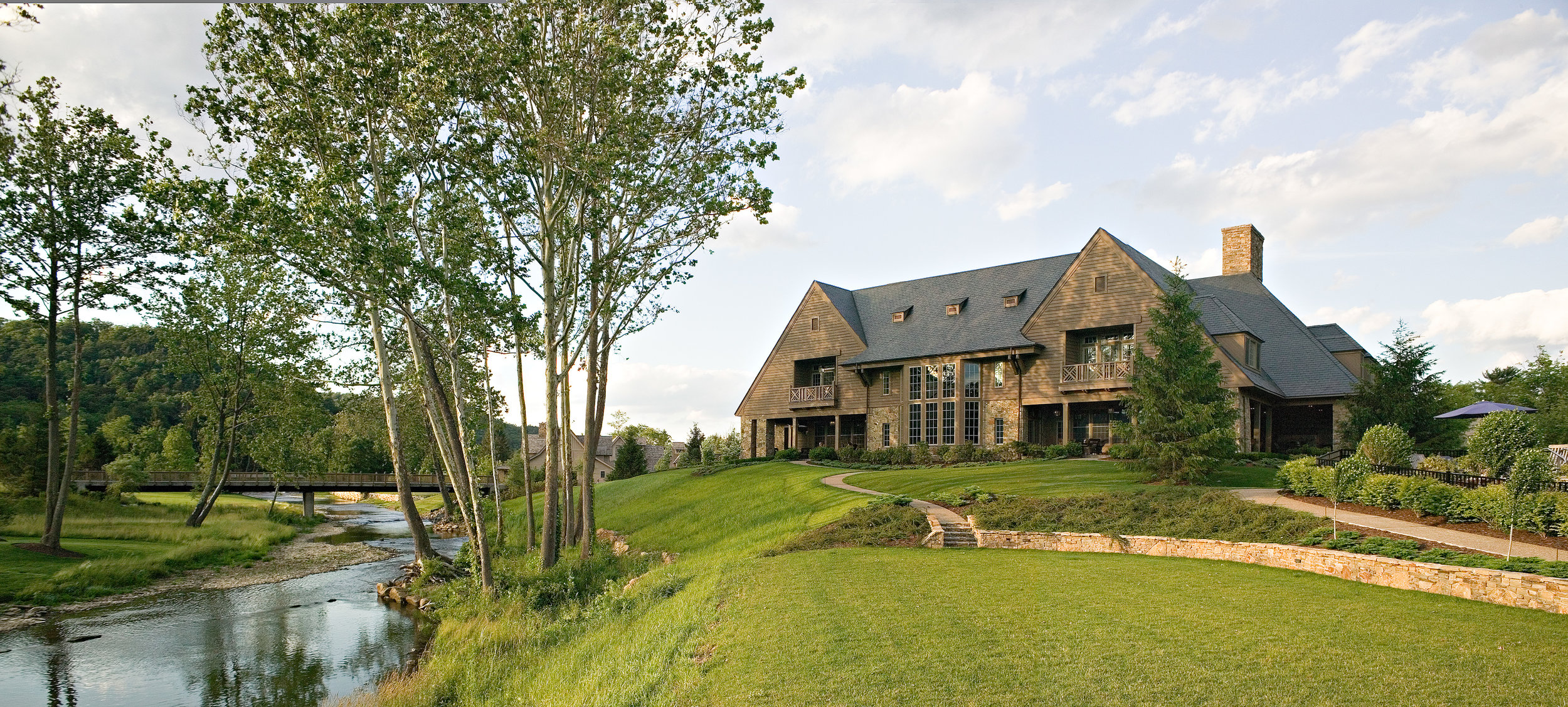The Snead

When the illustrious golf course architect Tom Fazio set out to design The Greenbrier Sporting Club’s Snead golf course, his order was both tall and long. The property came with a quirky history of being an internment camp, and then an airstrip and then an exclusive residential community of The Greenbrier.
Secondly, the course was to be named “The Snead,” after one of golf’s greatest players and the longtime Greenbrier golf professional emeritus. Snead is a legend at the famed resort and the responsibility to live up to his legacy definitely went into Fazio’s decisions as an architect and designer on the course. In fact, Fazio’s uncle, golfer George Fazio, was a friend of Snead’s. He introduced a teenage Fazio to the iconic golfer years ago and the burgeoning designer always kept tabs on the player over the years on the PGA TOUR.
“Someone asked me, ‘Was it strange to put a name like Sam Snead’s on a golf course?’ I said it wasn’t strange at all, it’s a great honor,” Fazio told GolftheUnitedStates.com. “We have ways of, unfortunately, forgetting about some of the old great players, especially when you consider the hype surrounding the younger players these days. With Sam Snead’s involvement in this course with his name, it’s a way of remembering the past in a very appropriate way.”
Take one step out onto the course’s lush bent grass fairways today and it’s easy to ascertain why Fazio courses remain at the top of any serious golfer’s list. Fazio has put his signature on over 120 courses throughout the world and holds the distinct honor of having more Top 100 courses than any other designer on Golf Digest’s popular list.
“Every Tom Fazio course I have ever played looks like it has been a golf course for a very long time,” says Robbie Gilmore, The Greenbrier Sporting Club’s golf professional. “The Snead, which is the only Tom Fazio design in West Virginia, is no exception. When we opened in 2004 it appeared we’d had this course in the Greenbrier Valley for decades.”
The Snead represents Fazio’s reputation as an architect who designs to a multitude of skill levels. The course’s design team was instructed to create a bold design that would create interest and strategy for all skill levels of players. The course is particularly forgiving off the tee but makes players work with a number of defensive greens, riddled with hidden edges, false fronts and complex reads.
“For someone headed out to play The Snead for the first time I suggest they avoid the fairway bunkers at all costs,” notes Gilmore. “In addition, don’t be afraid to use your putter from the collection areas. Sometimes that is the most prudent play. I will say that The Snead is a golf course you need to play a few times to discover all of the nuances. The conditioning of the golf course is so awesome that everyone wants to play it again and again!”
“The fairways have generous landing areas, but the course is a second shot course–meaning the golfer must play a quality approach shot into the greens to have a good chance at birdie or par,” explains Snead course superintendent Lee Hancock.
Hancock also explains that location also had to be considered when building the course. The Snead course sits on the valley and the traditional west to east winds played a part in the construction–the longer par 4 fifth hole plays down wind while the shorter par 4 ninth hole and the par 5 fourth hole each play into the wind.
The course as a whole is noted for its beautiful setting, surrounded by the majestic Allegheny Mountains, framed in by Greenbrier Mountain and Kate’s Mountain, and White Rock Mountain towering in the distance. Some of the community’s luxury homes dot the pea green fairways while Howard’s Creek rolls gently through the last few holes as you make your way back to the 32,000-square foot timber frame lodge that overlooks the 18th green.
A number of vistas await the golfer looking for a striking, visual experience. Hole no. 8 features a panoramic view of Kate’s Mountain while hole no. 16 enjoys a spectacular view of the Alleghenies looking east. From the championship tees on this hole you’ll find a 85-foot change of elevation to fairway floor.
“My favorite hole is no. 14, named ‘Howard’s Creek,’” says Gilmore. “You play a tee shot diagonally across the creek. Then the creek meanders all along the entire left side of the hole. All of the bunkers are placed in very strategic locations and the green is natural beauty. Playing the 14th during fall foliage season is a real treat. The most dramatic hole is probably no. 16, though 14 is my personal favorite.
In 2008 the course was designated as a Certified Audubon Cooperative Sanctuary, through the Audubon Cooperative Sanctuary Program for Golf Courses, an Audubon International program. To reach the certification, a course must exhibit a high degree of environmental quality in a number of areas.
Gazing out across the course it’s easy to see why. A number of finches, jays and birds of prey make The Snead their home, flitting about and singing throughout the day. And the wetland areas and creek create a diverse environment that serves as home to a number of species.
In turn, the management is dedicated to keeping The Snead as environmentally friendly as possible. “It’s our goal to maintain this property in the most environmentally responsible way possible so that the natural surroundings will be here the next generation,” says Hancock.
As a hunter and fisherman, Snead’s legacy is fully realized in the course that bears his name.
“The Snead is a fitting tribute to my dad in a place he loved very much and where he truly took his place as golf’s ambassador,” says Sam’s son Jack Snead. “It ensures that his spirit will live on among generations of golfers to come.”




